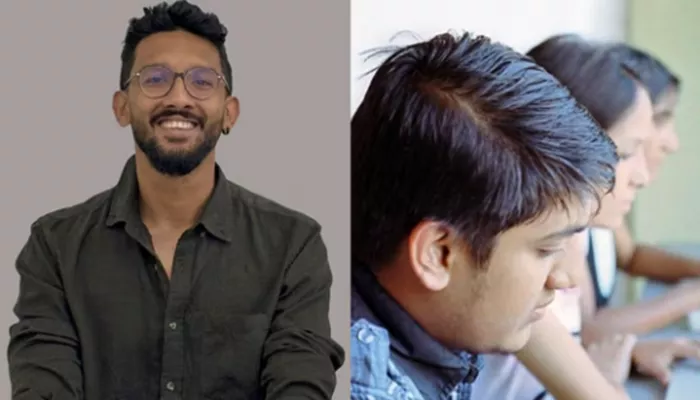Leaving India, thousands of students embark on a journey to the United States, driven by ambition and hope. However, they soon discover that their academic journey is just the beginning. The real challenge lies ahead: navigating the complex U.S. immigration system. For many, finishing their education is only part of the struggle—many find themselves overwhelmed by the bureaucratic hurdles. Will you become a success story, or will your dreams get lost in the paperwork?
Encountering Challenges Beyond Education
Indian students in the U.S. face significant challenges that extend beyond their studies, particularly regarding immigration. In a recent conversation with Hindustan Times, Indian-American podcaster and visa expert Rahul Menon shared insights from his engagement with immigrant communities. He focuses on guiding students through the complexities of education and immigration, drawing from his own experiences with these frustrations.
The Importance of Understanding Immigration
Menon stresses the need for students to familiarize themselves with the U.S. immigration system as soon as they arrive. “Many people underestimate the complexity of the U.S. immigration system,” he explains. “Having gone through this journey myself, I wish I had known more before I became too invested to turn back.”
Transitioning to the Workforce
One of the most significant hurdles for international students is the transition from academic life to the workforce. After completing their degrees, F-1 visa holders can work for up to three years. This includes one year of Optional Practical Training (OPT) and an additional two years under the STEM OPT Extension for those in STEM fields.
During this time, students must apply for an H-1B visa, which allows them to remain employed in the U.S. However, Menon points out a flaw in the system: “This visa should be based on educational merit and work experience. Instead, the system uses a lottery, randomly selecting 85,000 candidates regardless of their skills.”
Recent Changes Offer Slight Improvements
There is some positive news: the U.S. Citizenship and Immigration Services (USCIS) has cracked down on multiple lottery entries. As a result, eligible registrations dropped from 758,994 in FY 2024 to 470,342 in FY 2025—a decrease of 38.6%. This change has improved the odds of selection from 11% to 18%. While this slight improvement is encouraging, it highlights the need for students to prepare for the uncertainties ahead.
Advice for New Students
Menon advises new students to anticipate homesickness and loneliness. “The friends you make in university will become your new family,” he notes. He also recommends researching affordable options for essential services like phone plans, health insurance, and loans before making any financial commitments.
To maximize the OPT period, Menon encourages students to fully utilize the resources available at their International Student Office and Designated School Officials (DSO). “These are invaluable, often underused resources that can help you navigate your immigration journey,” he says.
Long Wait Times for Green Cards
Menon warns that the wait times for Green Cards can be exceptionally long—potentially spanning decades. He advises students considering immigration freedom to explore options in other countries.
Entrepreneurial Opportunities on Student Visas
Interestingly, Menon highlights that students on a visa can start their own companies and work during their OPT period. He also offers support to new students transitioning to life in America. “If you’re a new student or an early career professional looking to connect, feel free to reach out and schedule a call with me,” he encourages.
As thousands of Indian students navigate their paths in the U.S., understanding the immigration system and leveraging available resources will be key to their success.
Related topics:
- Belarus and Russia Complete Visa Recognition Agreement to Enhance Travel Options
- Haitian Advocates Criticize Trudeau’s Silence on False Claims About Immigrants Eating Pets
- Supporting Nonprofit Ethnic Newsrooms Amidst the Spread of Falsehoods About Immigrants


